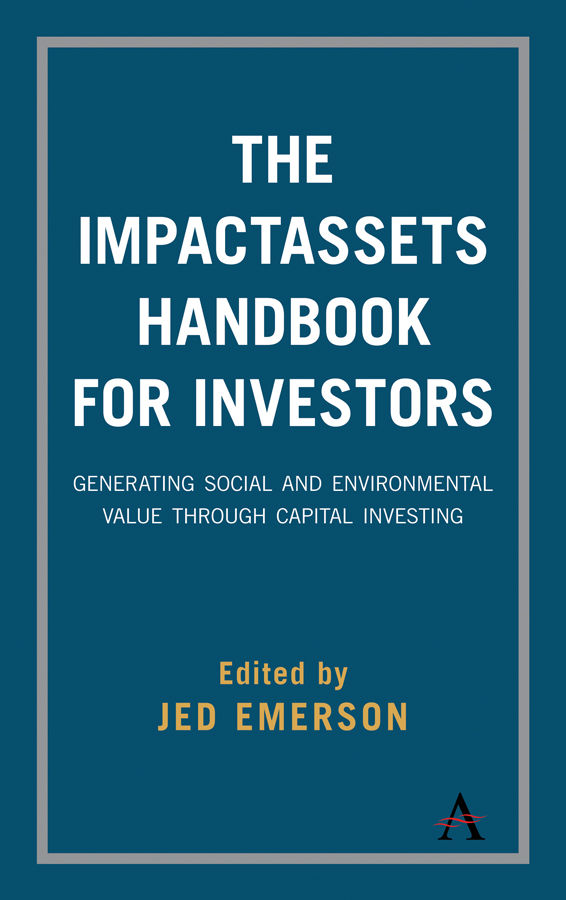 Reviewed by Philo Alto
Reviewed by Philo Alto
Jed Emerson’s third book provides both a practitioner’s toolkit to impact investing and builds a compelling case for why investors should align their capital with their values and purpose for the creation of a more just, sustainable society and planet. The book is a timely resource for asset owners, investment advisers and those generally interested in the state of impact investing as it approaches mainstream.
Emerson’s first book, co-authored with Antony Bugg-Levine, Impact Investing: Transforming how we make money while making a difference, focused on the transformative role of impact investing in mobilizing capital for social value, and the second, co-authored with Cathy Clark and Ben Thornley, The Impact Investor: Lessons in leadership and strategy for collaborative capitalism, honed in on impact investing from both a practitioner’s perspective and as an approach for collaborative capitalism.
For this handbook, the editor assembled 12 chapters from thought leaders and practitioners across the different dimensions of impact investing, philanthropy and impact measurement. At the same time, Emerson has also made it easy for readers with limited time to jump right into those chapters that have immediate relevance without compromising the overall flow, conciseness and tone of the book.
What I particularly liked about the book is its clarity on the needs of its different readers, deftly identifying cross-cutting themes without oversimplifying across different contexts. Case studies of impact investors are also provided to inspire readers on the variety of ‘impact triggers’ and the differing nature of the impacts they seek to create within their investment strategy and risk-return-impact goals.
While the book more than lives up to its billing as a handbook for impact investors, its subtitle, ‘Generating social and environmental value through capital investing’, does not adequately reflect the inclusion of chapters that broaden the notion of impact investing beyond capital investing. Chapters such as ‘Transformational Giving: Philanthropy as an investment in change’, ‘Communicating Impact: Frameworks for messaging’, and ‘A Journey to Impact: Initial steps towards impact investing’ clearly signal that, beyond focusing on tools currently available including philanthropy and impact investing, creating positive social and environmental impacts requires a deeper understanding of one’s own purpose and intended impacts.
Emerson has expertly navigated the balance across the different dimensions of impact investing without making it too technical for either novice or practitioner. However, I was hoping to read more about how impact investing can be framed within the lens of the recently-adopted Sustainable Development Goals (SDGs). In their Impact Investor book, co-authors Emerson, Clark, and Thornley have highlighted how collaborative capitalism can catalyse the development of impact investing via cross-sector or ‘multi-lingual’ collaborative leadership. And to some extent SDG 17: Partnerships for the Goals presents an opportunity for different stakeholders in impact investing to anchor their respective impact goals within the SDG framing. This could perhaps be a useful addition to a second edition of this handbook.
Overall, the book is an essential, highly readable primer on impact investing that delivers more than its ‘handbook’ label suggests. It also takes readers on an introspective learning journey about what it takes to create, communicate and measure intended social and environmental impacts when deploying their philanthropic resources.
Philo Alto is Founder and CEO of Asia Value Advisors.
Email: philo.alto@value.asia
About the book
Published by: Anthem Press
Price:Hardcover £39.99
ISBN: 9781783087297
To order: http://www.anthempress.com






Comments (0)